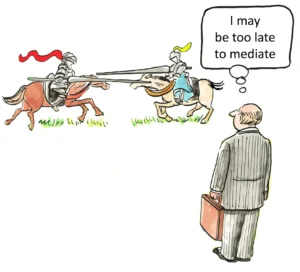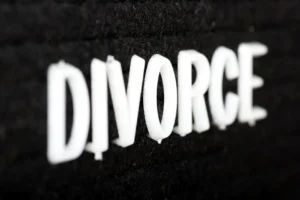What Are Involuntary Manslaughter Laws in the United States?
Involuntary manslaughter laws in the United States represent a complex area of criminal law that deals with unintentional killings. These laws vary significantly across different states, but they generally address situations where a person causes the death of another without intending to do so, often through negligence or recklessness. Understanding involuntary manslaughter is crucial for legal professionals, law enforcement, and the general public, as it occupies a unique space between accidents and more serious forms of homicide.
At its core, involuntary manslaughter is defined as an unlawful killing that occurs without malice aforethought. This means that while the perpetrator did not intend to cause death, their actions were still considered criminal due to negligence or the commission of another unlawful act. The key distinction between involuntary manslaughter and other forms of homicide lies in the absence of intent to kill or cause serious bodily harm.
The legal framework for involuntary manslaughter in the United States is multifaceted, encompassing both federal and state laws. At the federal level, involuntary manslaughter is defined under 18 U.S.C. § 1112 as the unlawful killing of a human being without malice in the commission of an unlawful act not amounting to a felony, or in the commission in an unlawful manner, or without due caution and circumspection, of a lawful act which might produce death.
State laws, however, often provide more detailed and varied definitions of involuntary manslaughter. These definitions can include specific circumstances such as deaths resulting from drunk driving, workplace accidents due to negligence, or deaths occurring during the commission of misdemeanors. The variations in state laws reflect different approaches to balancing public safety concerns with considerations of culpability and justice.
One common type of involuntary manslaughter is negligent homicide. This occurs when a person’s failure to exercise reasonable care results in someone’s death. For example, if a property owner fails to repair a known dangerous condition on their premises, leading to a fatal accident, they could potentially be charged with negligent homicide. The key element here is that the defendant should have been aware of the risk but failed to take appropriate precautions.
Another category often included under involuntary manslaughter is vehicular manslaughter. This specifically refers to deaths caused by negligent or reckless operation of a vehicle. While drunk driving fatalities are the most well-known example, vehicular manslaughter can also apply to cases of extreme speeding, distracted driving, or other forms of reckless behavior behind the wheel. The severity of charges and penalties for vehicular manslaughter can vary widely depending on the specific circumstances and the state‘s laws.
The concept of criminal negligence is central to many involuntary manslaughter cases. Criminal negligence goes beyond simple carelessness; it involves a gross deviation from the standard of care that a reasonable person would exercise in similar circumstances. For instance, if a caregiver leaves a young child unattended in a bathtub, resulting in the child’s drowning, this could be considered criminal negligence leading to involuntary manslaughter charges.
Reckless conduct is another important element in involuntary manslaughter laws. Recklessness implies that the defendant consciously disregarded a substantial and unjustifiable risk. This is a step beyond negligence, as it involves awareness of the risk but a decision to proceed anyway. An example might be someone who fires a gun into the air in a populated area, not intending to hurt anyone but disregarding the obvious danger of doing so.
The penalties for involuntary manslaughter vary significantly across jurisdictions. At the federal level, the maximum sentence is generally up to eight years in prison, along with fines. However, state penalties can range from a few years to over a decade in prison, depending on the specific circumstances of the case and the defendant’s criminal history. Some states classify involuntary manslaughter as a felony, while others may treat certain cases as misdemeanors.
It’s important to note that involuntary manslaughter charges can sometimes be brought in cases that might initially seem like accidents. For example, if a company’s gross negligence in maintaining equipment leads to a worker’s death, the responsible executives could potentially face involuntary manslaughter charges. This highlights the importance of understanding and adhering to safety regulations and standards of care in various professional and personal contexts.
The legal defense strategies in involuntary manslaughter cases often focus on challenging the prosecution’s assertion of negligence or recklessness. Defense attorneys may argue that the defendant’s actions were reasonable under the circumstances, that the death was a true accident that couldn’t have been foreseen, or that there were intervening factors beyond the defendant’s control. In some cases, the defense might also challenge the causal link between the defendant’s actions and the victim’s death.
One of the most challenging aspects of prosecuting involuntary manslaughter cases is proving the requisite level of negligence or recklessness. Unlike in cases of intentional homicide, where the prosecution must prove the defendant’s intent to kill, involuntary manslaughter cases require demonstrating that the defendant’s actions were so careless or reckless that they warrant criminal punishment. This often involves a detailed examination of the circumstances surrounding the death and expert testimony to establish standards of care and reasonable behavior.
The evolution of involuntary manslaughter laws in the United States reflects changing societal attitudes towards personal responsibility and public safety. For instance, the increasing severity of penalties for drunk driving fatalities over the past few decades demonstrates a shift towards viewing such deaths as preventable crimes rather than mere accidents. Similarly, there has been a trend towards holding corporations and their executives criminally responsible for deaths resulting from egregious safety violations, reflecting a broader interpretation of criminal negligence in the corporate context.
Another important consideration in involuntary manslaughter cases is the role of plea bargaining. In many instances, prosecutors may offer plea deals to defendants charged with more serious forms of homicide, allowing them to plead guilty to involuntary manslaughter in exchange for a reduced sentence. This practice reflects the complex nature of homicide cases and the challenges in proving intent or extreme recklessness beyond a reasonable doubt.
The intersection of involuntary manslaughter laws with other areas of criminal and civil law is also worth noting. For example, a death resulting from a DUI (Driving Under the Influence) might lead to both criminal charges of involuntary manslaughter and civil lawsuits for wrongful death. Similarly, workplace fatalities might involve not only potential criminal charges but also investigations by regulatory agencies like OSHA (Occupational Safety and Health Administration) and civil litigation.
In recent years, there has been increased attention to involuntary manslaughter charges in cases involving drug overdoses. Some jurisdictions have begun prosecuting individuals who supply drugs that lead to fatal overdoses with involuntary manslaughter or similar charges. This trend reflects efforts to combat the opioid epidemic and holds drug dealers accountable for deaths resulting from their actions, even if they did not intend to cause harm.
The application of involuntary manslaughter laws to medical professionals has also been a subject of legal and ethical debate. In cases where medical errors or negligence lead to patient deaths, prosecutors must carefully weigh the public interest in holding healthcare providers accountable against the potential chilling effect on medical practice. These cases often involve complex questions about standards of care and the line between unfortunate outcomes and criminal negligence.
Another emerging area in involuntary manslaughter law concerns deaths resulting from cyberbullying or online harassment. As digital communications play an increasingly significant role in society, legal systems are grappling with how to address cases where online behavior leads to real-world tragedies, such as suicides. While these cases don’t fit the traditional model of involuntary manslaughter, some jurisdictions are exploring ways to hold individuals criminally responsible for deaths indirectly caused by their online actions.
The role of expert witnesses in involuntary manslaughter trials cannot be overstated. These cases often hinge on technical details that require specialized knowledge to interpret. For instance, in a case involving a workplace fatality, experts in occupational safety might be called to testify about industry standards and whether the defendant’s actions constituted a gross deviation from those standards. Similarly, in cases involving medical negligence, medical experts play a crucial role in explaining complex procedures and standards of care to the jury.
One of the most challenging aspects of involuntary manslaughter cases is balancing justice for the victims with fairness to the accused. Unlike in cases of intentional homicide, defendants in involuntary manslaughter cases often had no intention of causing harm and may be deeply remorseful for their actions. Judges and juries must weigh the tragedy of the loss of life against the defendant’s culpability and the potential deterrent effect of punishment.
The concept of proximate cause is often central to involuntary manslaughter cases. Prosecutors must demonstrate not only that the defendant’s actions were negligent or reckless but also that they were the proximate cause of the victim’s death. This can become complicated in cases where there are multiple contributing factors or intervening events. Courts have developed various tests to determine proximate cause, including the “but for” test and the “substantial factor” test, which can vary by jurisdiction.
In some jurisdictions, the doctrine of transferred intent can apply to involuntary manslaughter cases. While this concept is more commonly associated with intentional crimes, it can come into play in situations where a defendant’s reckless actions result in the death of someone other than the intended target of their behavior. For example, if someone drives recklessly to scare a pedestrian but ends up killing a bystander instead, the doctrine of transferred intent might apply.
The impact of involuntary manslaughter convictions extends beyond the immediate legal consequences. Those convicted may face significant challenges in employment, housing, and other areas of life long after serving their sentences. This has led to debates about the appropriate balance between punishment and rehabilitation in these cases, particularly for defendants with no prior criminal history.
In conclusion, involuntary manslaughter laws in the United States represent a complex and evolving area of criminal justice. These laws seek to address situations where deaths occur due to negligence or recklessness, without the intent to kill that characterizes other forms of homicide. The variations in state laws, the challenges in proving criminal negligence, and the ongoing debates about appropriate penalties all contribute to the complexity of this legal landscape. As society continues to grapple with issues of personal and corporate responsibility, the application and interpretation of involuntary manslaughter laws will likely continue to evolve, reflecting changing attitudes towards culpability, public safety, and justice.
Sources:
- https://www.law.cornell.edu/uscode/text/18/1112
- https://www.justia.com/criminal/offenses/homicide/involuntary-manslaughter/
- https://www.findlaw.com/criminal/criminal-charges/involuntary-manslaughter-overview.html
- https://www.nolo.com/legal-encyclopedia/homicide-murder-manslaughter-32637-2.html













